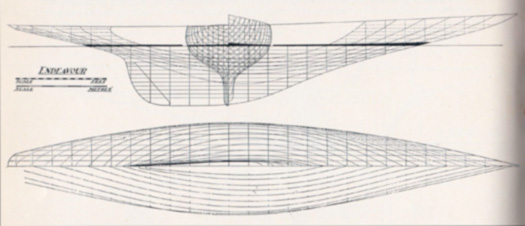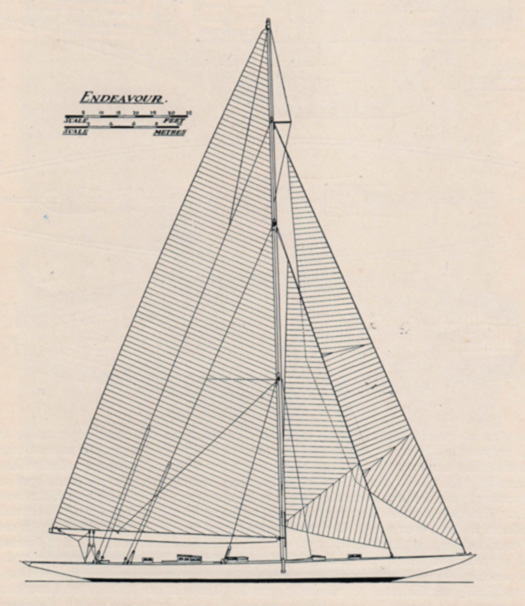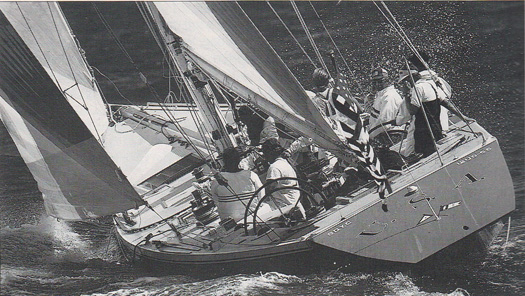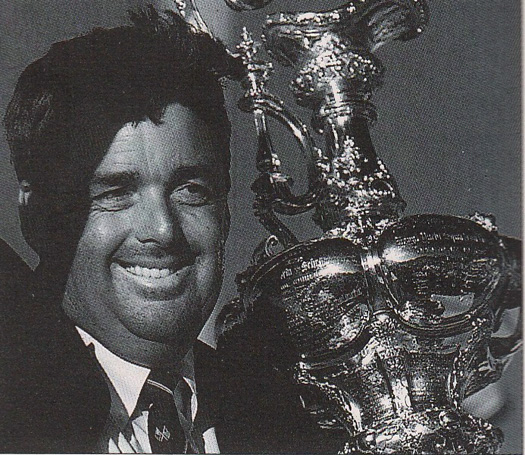#americascup – Today, the monster in its fully finished form finally emerges from its cave. For sure, we have a pretty good idea of what it will look like. Yet the convoluted preliminaries for 34th America's Cup have gone on for so long now that anyone who reckons they know what has been happening is probably deluded. And as for what it's really going to be like off San Francisco today, it's anyone's guess – curtain up on any show is a world away from dress rehearsal.
There's one heck of a difference between tests and trials, and defender and challenger selections. All we know is that two 72ft catamarans will be pushed to the limit, and the rest of the world will briefly pay attention to our sport of sailing, mainly in the hope of seeing a spectacular and very expensive crash before dinner.
But for sailing enthusiasts, mixed feelings only begins to describe it. Horrified and slightly guilty fascination is probably the most general reaction. Not to worry, folks. It has always been that way. The America's Cup is indeed sailing's sacred monster. But it's undoubtedly our monster. And it's just about the only way the general public connect with sailing. So we have to live with it with the best grace we can manage, for it's completely pointless trying to assert that it has nothing whatever to do with us.
It's grand guignol goes afloat. And it's the apogee of the times in which we live, for it's now way beyond the international. It's beyond the supra-national. It's globalisation par excellence. It may in theory be New Zealand challenging America. But the multiple-nationality mixes in the crews have made traditional concepts of sailing for your own country irrelevant. So it's completely appropriate that it's taking place in sailing waters off the world capital of electronic technological development in the American state which is home to the world headquarters of the entertainment industry.
If this all seems way over the top, worry not - be of good cheer. For just about every staging of the America's Cup has provided some of the most over-the-top events of its era. Larger than life characters. Spectacular and often dangerous maritime technology. And expenditure that does nothing whatever to reduce the popular perception that sailing is basically a rich man's sport.
All that together with all the jolly interaction of minutely detailed rule interpretation, legal rows and international incidents. The miracle is that so far nobody seems to have gone to war, but it's early days yet. Certainly back in the 1890s the disputes that our own Lord Dunraven got into with the New York Yacht Club weren't that far from the "send a gunboat" reaction which played a key role in international diplomacy at the time.

The schooner America shortly after her launching in New York in 1851. A swift and seamanlike vessel, she was able to sail across the Atlantic before winning the new Queen's Cup – subsequently the America's Cup - at Cowes that same year. A whole world away from today's hazard-laden 72ft catamarans, America survived a colourful life until 1945, when she was finally destroyed in a snowstorm in Annapolis .
Faced with all this, those of us who prefer the quiet life seek solace in contemplating the boats and the sailing, even if the last time the America's Cup was in a form to which ordinary sailing folk can relate was when it was staged off Perth in Western Australia in 1987. The racing was in 12 Metres with great sailing. This was thanks to the afternoon breeze wrongly known as the Fremantle doctor. It's actually the docker, from the days when it regularly brought becalmed sailing ships into port each afternoon. But it has been gentrified with suggestions of health benefits, as was Fremantle itself thanks to the America's Cup.
Whatever, it was a real racing series, using boats with which the world of sailing could identify. But after Dennis Conner won and took the trophy back to America, the short but happy period with 12 Metres came to an end, and since then we've had to get used to a new scenario each time round, sometimes with boat which are very odd indeed.
But then that's always been the case when we look at the America's Cup in its entirety. Recently, in talking here about Harry Donegan of Cork and his cutter Gull which he raced in the first Fastnet of 1925, we talked of Gull as having been designed by the young Charles E Nicholson, who went on to design some formidable racing craft, America's Cup boats among them.
In fact, it was Nicholson's first America's Cup challenge design, Shamrock IV of 1914 for Thomas Lipton, which was perhaps his most remarkable of all. The previous series of 1903 had seen things get out of hand entirely, with the Americans successfully defending with the 143ft Herreshoff-designed Reliance. She was lightly built out of such a toxic mixture of metals that it's said she hissed when put afloat, and after keeping the cup with three straight and convincing wins, she had to be dismantled as her seaworthiness could no longer be guaranteed.

Charles E Nicholson's hull design for the 110ft Shamrock IV in 1914 was very advanced for its time

Shamrock IV's rig was much more primitive than her hull design
The new rule for the proposed 1914 series saw boat sizes reduced, but for his first attempt Nicholson went high tech, producing a skimming dish 110ft long. Unfortunately for the challenge, the Great War broke out as this extraordinary boat was sailing across the Atlantic - challengers had to do this in the early days of the Amrica's Cup, as America herself had sailed to England in 1851. But when Shamrock reached New York, the series was postponed for the duration of the war, and when it finally took place in 1920, even though the Americans had had six years to create a faster boat, Shamrock IV came within one race of winning.

The hull lines of the J-Class Endeavour of 1934 were much less advanced in concept than the hull lines of Shamrock IV twenty years earlier.

With the bow overhang longer than the stern, the J Class Endeavour is a rather odd-looking boat
Subsequently, Bermudan rig took over with the introduction of the J Class in 1930, but although the rigs were more modern, it could be argued that the J Class marked a distinctly retrograde step from Shamrock IV in hull design. I know they're continuing to build J Class yachts these days, but for the life of me I can't find them attractive. The sterns look all wrong, or maybe the bow overhang protrudes too much Whatever the reason, the J Class rule produces sterns which seem to rise too quickly, while the bow overhang is excessive to give a sort of back-to-front profile.
Thus a comparison between the hull lines of Shamrock IV and Endeavour – supposedly the most beautiful J Class of them all – shows a sweet hull in the case of Shamrock, yet with Endeavour you've a hull which is going to pull half the ocean behind her.

The great racing off Perth in 1987, when Dennis Conner's Stars & Stripes (pictured) wrested the cup back from the Australians. This was the last occasion in which the America's Cup was sailed in boats which bore some resemblance to normal yachts.

The Dennis Does It. Dennis Conner with the America's Cup after winning it back from the Australians in 1987.
It's all a long way from today's catamarans which aren't really described as boats at all – they're platforms underneath wings. And any disturbance of the water is minimal. So it could be argued that the only connection with the America's Cup in times past is that they're being sailed by people, but even there we have difficulty in discerning their humanity, as they're kitted out like bikers in the TT on the Isle of Man.
But somewhere in it all, there are real people. There isn't much Irish involvement this time round. But with names like William Henn and Lord Dunraven and Willie Jameson and Thomas Lipton and Harold Cudmore resonating down the years in America's Cup history, we cannot deny that slightly horrified fascination as the 34th series gets under way today in San Francisco.
Not least of the fascination lies in seeing what happens afterwards. We aren't talking about everyday ordinary folk here. The kind of hyper-successful people who get to make America's Cup challenges and defences genuinely do believe that when something goes wrong, then it undoubtedly is somebody else's fault. Their code is summed in this spin on an old piece of verse:
And when that one great scorer comes,
To write against your name,
He writes not that you won or lost,
But how you spread the blame.































































